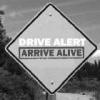
Drowsy Driving Prevention Week Begins
Drowsy Driving Prevention Week begins today and runs through Nov.8. The Centers for Disease Control and Prevention reports that driving while drowsy is a major contributor to an estimated 100,000 motor vehicle crashes per year and results in more than 1,500 deaths nationwide. Sleepiness demonstrably impairs safe driving by reducing alertness and slowing reaction time.
According to CDC, several factors can contribute to drowsy driving. Although insufficient sleep duration and fragmented sleep are significant causes of drowsiness, circadian rhythms cause increased sleepiness during the afternoon, even with adequate sleep. Sedating medications and consumption of alcohol also cause drowsiness, which is amplified with sleep deprivation. Untreated sleep disorders also can contribute to excessive sleepiness.
Groups at higher risk for sleep-related crashes include bus, truck, and other commercial drivers; shift workers and persons with more than one job or irregular work hours; persons with untreated sleep disorders such as sleep apnea and narcolepsy; and drivers less then 26 years old, especially males. In addition, adolescents are more likely than older drivers to be sleep-deprived because of school schedules, social activities, and shifting circadian rhythms.
Good sleep practices include establishing a regular sleep schedule, avoiding intense physical activity or large meals before bedtime, and ensuring an environment conducive to sleep. For short-term improvement of alertness, drivers can park and take a 15-20 minute nap or consume caffeine. High-intensity lighting, nap breaks during shifts, and breaks from repetitive work can reduce the risk for drowsy driving among shift workers. Diagnosis and treatment of sleep disorders also are important in reducing the risk for drowsy driving.
Additional information is available from the National Sleep Foundation and CDC.